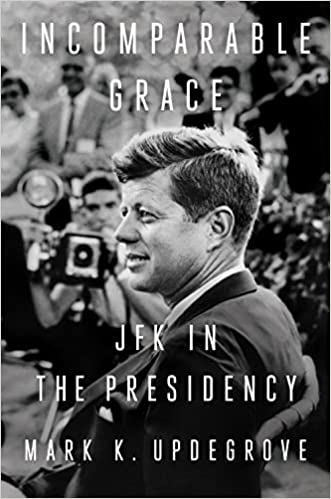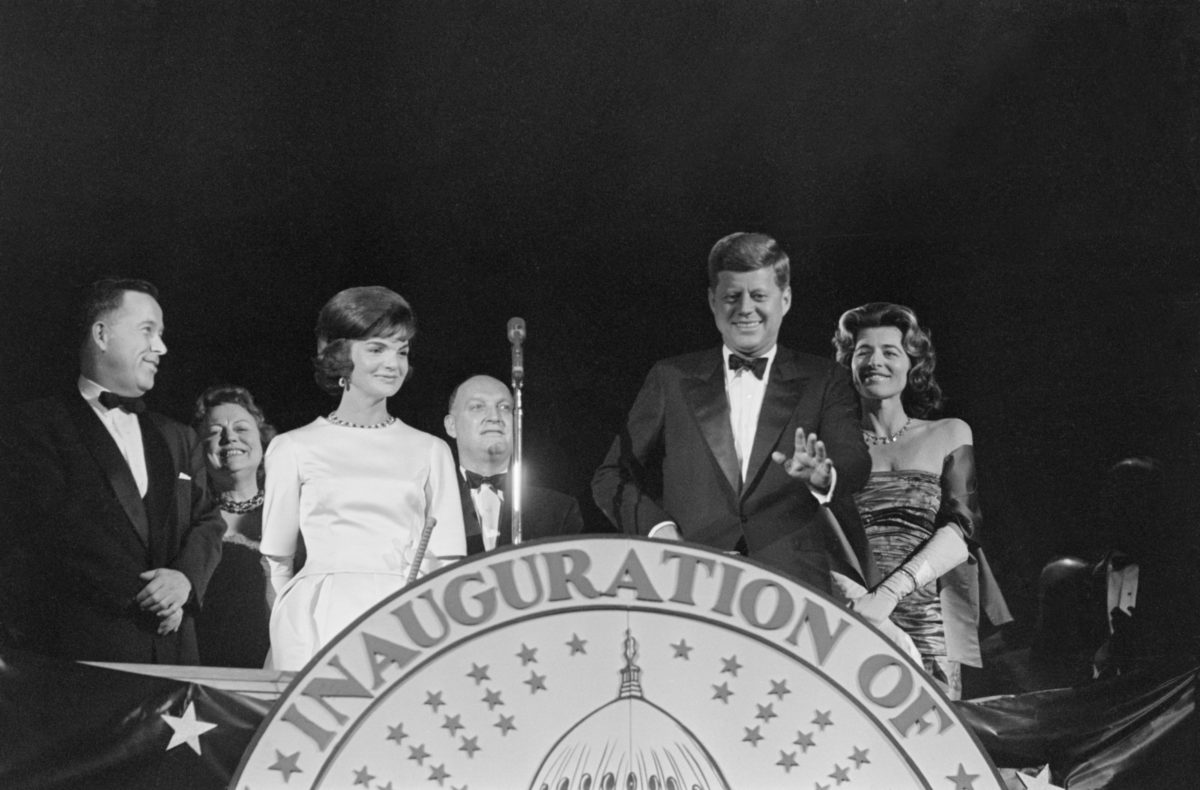Since President John F. Kennedy’s assassination on Nov. 22, 1963, his reputation has undergone multiple swings of the biographical pendulum: slain hero-king, Cold War klutz, prescient foreign policy maker, phony civil rights progressive, charismatic but ineffective centrist, incipient peacenik, whoremongering libertine and, overarchingly, hub of conspiracy theory.
On that last a recent entrant into the paranoiac parade of wonderers weighing in on what or who killed Jack Kennedy was Bob Dylan, who in 2020 interrogated the conundrum that is JFK in the epic — 17 minutes and one second and 165 kaleidoscopic lines long — ballad “Murder Most Foul.” Among the most consistent comments on Kennedy’s thousand days in office is the observation that the man had style to spare, a consensus reflected in the title of Mark J. Updegrove’s addition to the Kennedyana oeuvre.
“Incomparable Grace” takes up four years after the point at which Fredrik Logevall leaves off in ending his 2020 “JFK: Coming of Age in the American Century, 1917-1956,” the first volume of what will be an energetically comprehensive diptych. This spring saw release of a young adult title, “JFK & the Muckers of Choate,” in which author Scott Badler channels the adolescent Kennedy in the first person chronicling his prep school days.

Incomparable Grace: JFK in the Presidency
By Mark K. Updegrove, Dutton, 2022, $29
This post contains affiliate links. If you buy something through our site, we might earn a commission.
Besides avoiding the deep waters of JFK’s origins and his mythopoetic wartime experience, Updegrove’s decision to focus on Kennedy’s short-circuited stint in office spares him the much-reiterated chores of getting his man into the House and Senate and thence to 1600 Pennsylvania Avenue NW and chronicling the aftershocks of his assassination. Economically structured and engagingly written, Grace begins the morning of Inauguration Day 1961 and ends at 1 p.m. that awful Friday afternoon 34 months later.
In between, Updegrove interweaves many varied facets of Kennedy, some complimentary, some caustic, so that his narrative acquires a wholistic feel, not favoring one stripe over another. Slight gaffes aside — he invokes “Beltway insiders” in 1963 when the capital’s notoriously metaphorical ring road didn’t even open to traffic until nearly a year after Kennedy’s death — the author paints a fluent, knowledgeable warts-and-all portrait that encompasses the many JFKs of legend, lore, and official record in a tone and voice that, against all odds, stand to transport readers of a certain age such that they are reliving those times without necessarily cringing in advance of the 6.5 mm blows to come — perhaps ushering in an era of Kennedy appraisal that takes him all in all as a man, one whose like we shall not see again.
historynet magazines
Our 9 best-selling history titles feature in-depth storytelling and iconic imagery to engage and inform on the people, the wars, and the events that shaped America and the world.






